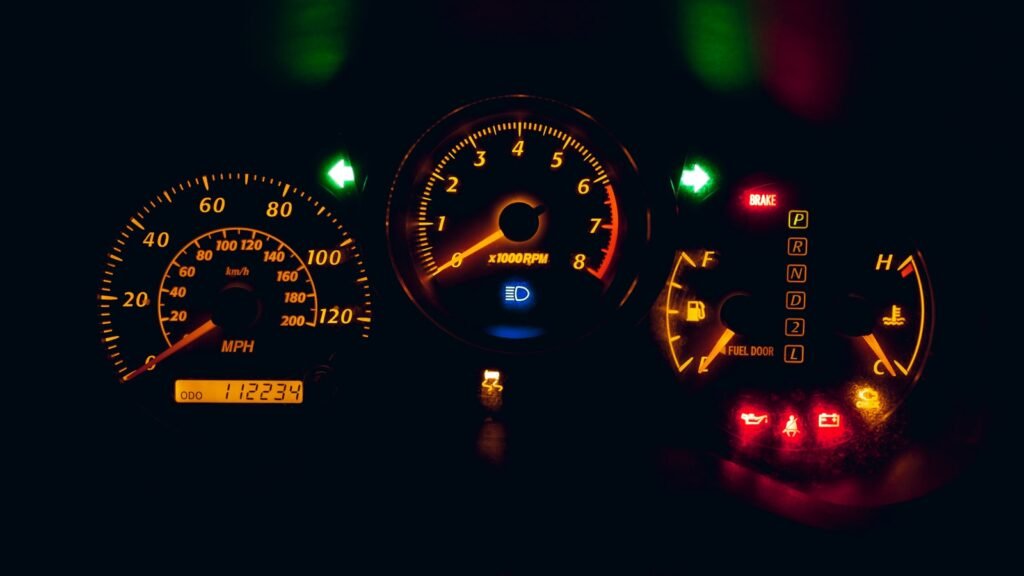Signs Your NoX Sensor Is Failing (and What to Do About It)
If your diesel van or car’s engine light has come on unexpectedly, a faulty NoX (nitrogen oxide) sensor could be to blame. NoX sensors play a key role in reducing emissions and keeping your vehicle running efficiently. When they start to fail, you’ll notice warning lights, reduced performance, or even limp mode. In this guide, we’ll walk through the most common symptoms of a failing NoX sensor and explain exactly how to fix the problem—often at your location, without a garage visit.
What Is a NoX Sensor?
NoX sensors measure the level of nitrogen oxides in your exhaust gases before and after the catalytic converter. Modern diesel vehicles use this data to optimise combustion and emissions controls. A healthy NoX sensor helps deliver better fuel economy, lower emissions, and smooth power delivery.
Top 6 Symptoms of a Failing NoX Sensor
- Check Engine Light: The most obvious sign. Your ECU logs a fault code (P229F, P22EE, etc.) indicating NoX sensor issues.
- Limp Mode or Reduced Power: To protect the engine and emissions system, the vehicle limits performance when it detects sensor errors.
- Poor Fuel Economy: Incorrect readings cause the ECU to enrich the air/fuel mix, burning more fuel than necessary.
- Hesitation or Surging: You may feel jerky acceleration or surges as the ECU struggles with faulty data.
- Failed Emissions Test: A faulty NoX sensor often leads to emissions test failures or MOT refusals.
- Recurring Fault Codes: You clear the code, but it comes back shortly after—indicating the sensor itself is at fault.
Common Underlying Causes
NoX sensor faults don’t happen in isolation. Here are the typical reasons they fail:
- Sensor Contamination: Soot and debris build-up over time, clogging the sensor’s filter.
- Heat Damage: Constant exposure to high exhaust temperatures can degrade the sensor element.
- Wiring & Connector Issues: Corroded or broken wires disrupt the signal to the ECU.
- ECU Software Glitches: Rarely, outdated or corrupt engine maps can misread a perfectly good sensor.
- Aftermarket Deletes: Previous attempts to remove or bypass emissions equipment can leave faulty code behind.
Real-World Examples
- BMW 320d in Market Harborough: Owner experienced limp mode on motorway. Mobile diagnostics revealed a NoX sensor reading out of range. Sensor cleaned and recalibrated on-site—no parts needed.
- Mercedes Sprinter in Loughborough: Check engine light returned after a cheap OBD reset. We performed a professional mobile diagnostic, replaced the damaged wiring loom, and cleared codes.
- Ford Transit Custom near Hinckley: Fuel economy dropped by 3 mpg. A faulty pre-catalyst NoX sensor was replaced via our NoX delete option—stopping the error without new parts.
How to Diagnose & Fix a NoX Sensor Issue
Professional mobile diagnostics are your best bet to pinpoint the problem:
- Full Fault Scan: We connect dealer-grade tools (CMD Flash, Autotuner) to read active and historic fault codes.
- Live Data Check: Sensor voltages and response times are measured under various engine loads.
- Inspect Wiring: We examine connectors and wiring for corrosion or damage.
- Clean or Replace: Depending on condition, we either clean/calibrate the sensor or disable it via NoX delete.
- Code Clear & Test: After fixes, we clear codes and verify the sensor no longer triggers warnings.
Maintenance Tips to Prolong Sensor Life
- ✔️ Use high-quality fuel and regularly service your DPF to reduce soot contamination.
- ✔️ Schedule periodic mobile diagnostics to catch early warning signs.
- ✔️ Avoid cheap OBD resets—always use professional software to clear codes and update ECU maps.
- ✔️ Keep exhaust heat shields intact to protect sensors from heat damage.
When to Consider a NoX Sensor Delete
If sensor replacements are costly or you prefer a permanent, software-based solution, our NoX sensor delete safely bypasses the sensor in the ECU. It’s fully reversible and completed on-site—no parts to replace, no second visit required.
Ready to Resolve Your NoX Issues?
If you’re seeing warning lights, limp mode, or failed emissions tests, don’t wait. Book a mobile diagnostic or NoX delete service with iFixAdBlue. We cover Leicester, Leicestershire, and surrounding areas—getting you back on the road quickly and affordably.


